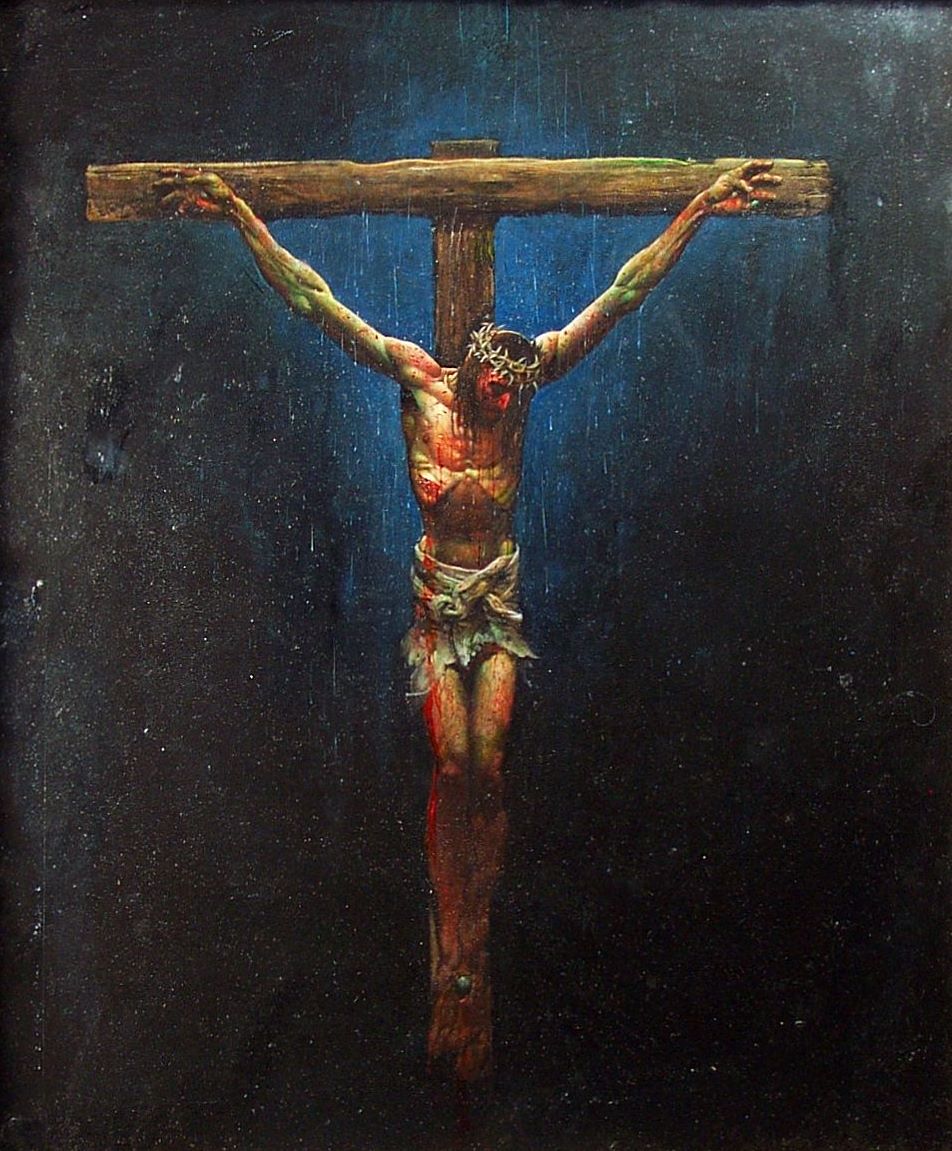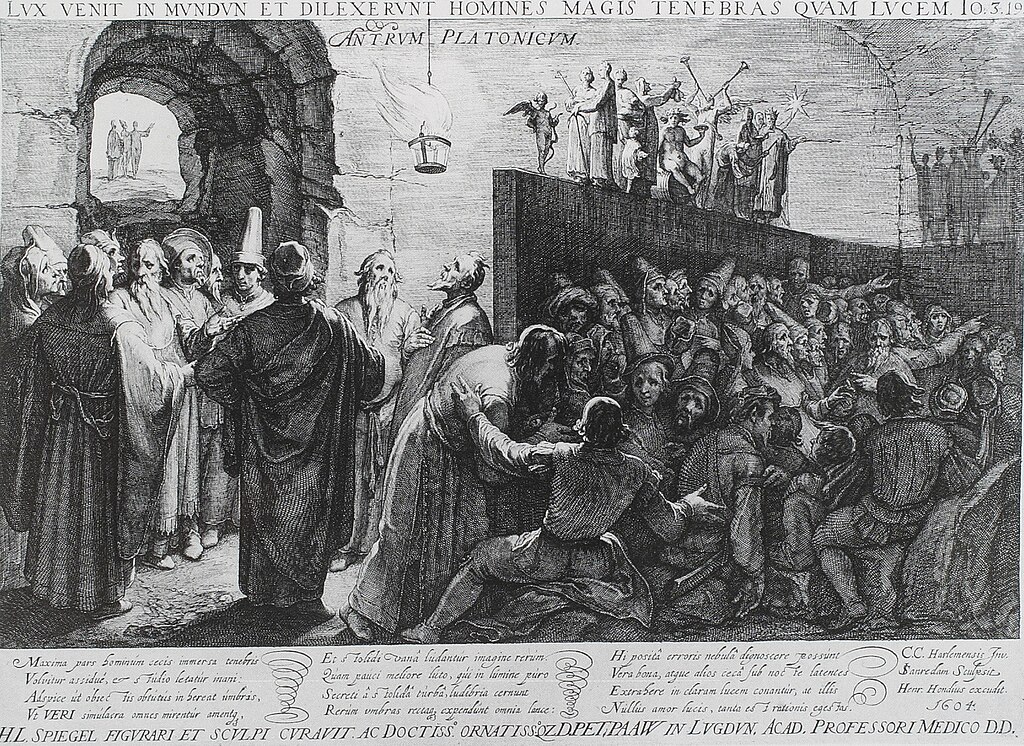The Divine Irreference of Images:
- Essentially breaking down Baudrillard's views on 'dissumaltion' and 'simulation': "...dissimulate is to pretend not to have what one has. To simulate is to feign to have what one doesn't have."(pg.3)
- He then goes on to use it as an example within medicine and the army and how, if someone begins to simulate symptoms, (such as being ill or 'crazy') that they may have not only convinced others of this, but may eventually convince themselves of these symptoms - and believe them to be true. (the gap between conscious and unconscious, 'real' and 'unreal' narrows): "...but why would simulation be at the gates of the unconscious?..."work" of the unconscious be "produced"...?." (pg.3)
Baudrillard then applies this to the topic of religion and the idea of iconography. Explaining how Iconoclasts ("a breaker or destroyer of images, especially those set up for religious veneration" - Dictionary.com) were the original 'predictors' of the simulation of the image of God and tried to stop this from occuring.
Examples of iconography being duplicated (simulacra):



- However, he also shines a positive light on those who continue to worship iconic images. Stating these "...icon-worshipers..." (pg.5) have the "...most adventurous..."(pg.5) minds, as although they may already know these images to "...no longer represent anything...", they still continue to
'praise' and not question the meaning behind their religious imagery as to not "...dissimulate the fact that there is nothing behind them." (they pretend to protect their faith). If the images have no story, then their faith may not be real either.
"But what if God himself can be simulated, that is to say can be reduced to the signs that constitute faith?...it is no longer itself anything but a gigantic simulacrum." - The constant replication on these iconic religious images may begin to lose the original meaning.
- 4 stages of simulacra;
First case - "good"/original
Second case - "evil"/copy
Third case - "being an appearance...sorcery"/copy of a copy
Fourth case - "no longer of the order of appearances, but of simulation"/meaning is lost.
- We begin to replace the meaning originally placed on the image with our "...lived experiences, resurrection of the figurative..." and therefore, turn this into a a panic of the "...production of the real..." in turn effecting the "...panic of material production.". Splitting the world of images into 3; "...the real...", "...the neoreal..." and "...the hyperreal".
Hypermarket and Hypercommodity:
- This chapter is looking at the way in which the hyper-markets are a smaller example of society and the rules and conventions, which it in turn tries to 'impose' on the larger, outside 'real' world.
- Baudrillard also seems to believe that it is a space that both contradicts itself and lacks any form of meaning. It is essentially a 3D depiction of simulacra. He notes this by mentioning the billboards hung around the stores that we look at by comparing them to the security cameras that watch us. Although we believe we are viewing the billboards,Baudrillard suggests that is actually us, we, the public, being viewed upon, which in some ways, then makes the cameras seem less intrusive; "...this sign can thus coexist with all the others, and even with the opposite imperative...huge billboards express by inviting you to relax...choose in completely serenity...in fact, observe and surveil you...as badly, as the "policing" television."(pg.76). They have therefore lost the meaning to "relax" you and have merged with the identity of the security surveillance to watch you. Thus, every symbol inside no longer has any relevance either, as it is constantly replaced so it has a never ending point, instead they are merely acting as "...successive signs" (much like the billboards).
- Hypermarkets are viewed as taking away from the old "...traditional market..."(pg.77) where people came to "...rub elbows..." and instead creates a whole new section of society, which Baudrillard labels "the metro area" or "metropolitan area". Instead of making itself part of the community it has placed itself within, it stands out and controls it. He explains this by talking of how the outside of the hypermarket 'merges' with the "...highways that surround and feed it." and therefore "it is the the hypermarket that establishes an orbit along which suburbanization moves." It creates it's own social rules or 'norms' which we then unknowingly try to apply to the outside world. The hypermarket is a form of "...controlled socialization."(pg.76)
- KEY EVENT: May, 1968, France.
"In France, the May 1968 crisis escalates as a general strike spreads to factories and industries across the country, shutting down newspaper distribution, air transport, and two major railroads. By the end of the month, millions of workers were on strike, and France seemed to be on the brink of radical leftist revolution" (History.com)
These protests nearly caused the end of the factories and universities (which Baudrillard also believes are 3D representations of simulacra) and could have, in some ways maybe prevented the hypermarket; "There, a new, original violence was born in response to the orbital satellization of a model...who referential is lost."(pg.78)
The Implosion of Meaning in the Media;
- Three hypotheses:
1. "Information produces meaning" - but meaning is lost too quickly. "Antimedia"(pg.79) needs to take place to correct this.
2. "Information has nothing to do with signification" We don't need to have a meaning to everything. Like the example of the genetic code - that exists on it's own, we just add in the meaning to try and make sense of it.
3. Correlation between 1 and 2 - by not having meaning at all, it adds to loss of "...information...media and the mass media"(pg.79).
- "Information devours its own content"(pg.80) for two reasons;
1. Pretending, like an act, to create meaning within itself. We like to believe that media creates a channel of communication which therefore gives it meaning, but Baudrillard insists it doesn't. It is one circular simulacrum, in which we are lured in through emotion and therefore plant our beliefs in to; "...in each one of us, corresponds to this simulation of meaning and of communication in which this system encloses us."
2. Deconstructing the idea of the social - mass media no longer creates innovation but instead "...total entropy." It takes a medium and uses it to manipulate the real, creating a hyper-reality, where everything loses its meaning. (Using McLuhan's
medium is the message as a counteract) (pg.83).
- Implosion of meaning essentially means the "...absorption of one pole into another."(pg.83). Everything is brought in on itself and is completely without any logic, reality or meaning. Distortion at a mass level. The word "implosion" however, does not signify that this will eventually come to an end, but simply that it will become so much the norm that we will no longer recognise this lack of meaning.
- Does the media control our meaning, or do we control it by simply taking it in, and ignoring it? Baudrillard is questioning whether the fascination with media comes from media itself or from us, and our ability to remain silent on the mass amount of information we take in almost daily; "This absence of a response can no longer be understood at all as a strategy of power, but as a counter-strategy of the masses themselves when they encounter power."(pg.84). He does not believe that ignoring it is a sign of us necessarily being in control, in fact, it is the very opposite, we are losing the ability to communicate, we are losing the meaning; "Thus the strategic resistance is that of the refusal of meaning and of the spoken word..."(pg.84)
Absolute Advertising, Ground-Zero Advertising:
- Advertising comes and goes, so has no deeper meaning; "...it is instantaneous and instantaneously forgotten."(pg.87) and is therefore "...the lowest form of energy of the sign."
- Talks about propaganda as one of the first worst forms of pretending to have meaning via advertising. Baudrillard states that political agenda through the form of advertising was only used as a quick way to hit many. It wasn't used to create a great advert, it was used as a "...vehicular model of the only great and veritable idea-force of this competing society; the commodity and the mark."(pg.88) - it got what it wanted, the quickest and easiest way it could.
- This then took the social in to advertising as a way of "...trying to impose..." itself as a "...trademark image."(pg.88). Advertising began to be reproduced again and again, everywhere and we, the public, the society, didn't stop it; "The social as a script, who bewildered audience we are."(pg.88)
We let it destroy the meaning behind it all; "...it does not offer signifieds in which to invest, it offers a simplified equivalence of all the formerly distinctive signs, and deters them..."(pg.89)
- However, this is not the most terrifying drive behind the loss of meaning in today's society. This, Baudrillard, places in the hands of "...the languages of computer science."(pg.89). By this he talks about how digitalisation and "cybernetic languages" are ruining the grip on true language and communication and eventually reality and meaning at a quicker and wider scale than advertising could ever have imagined possible. Seeming to suggest that this may be the end of advertising; "...that is already putting an end to the reign of advertising."
- Advertising is now the social, because it created it. If it stops being this, on the other hand, then it ceases to exist. It is now latching on to itself; "the social must be saved just as nature must be preserved; the social is our niche...it has fallen into the register of supply and demand."(pg.90)
- In order to save itself, it must re-write the languages it is using to create an illusion that it is 'empowering' the public, rather than creating it. "...with a mocking liberty, proving the social while denying it."(pg.91)
- Seduction causes saturation (Las Vegas has turned its adverts into "retro" even though Baudrillard feels that these 'deface' the architecture, and lend no support to a deeper meaning of the city - pg.91-92).
- Semiology is useless; "...That is why...it is useless to analyse advertising as a language...to which neither linguistics nor semiology corresponds...they function on...meaning..."(pg.92)

- The Forum des Halles which Baudrillard considers to be a perfect example of how our community has become consumed by advertising; "And it is something like the Forum that best illustrates what advertising has become..."(.pg.93)
(The Forum des Halles is show to the left, originally a wholesale market called Les Halles De Paris, this building was destoryed in
1971 and replaced with an underground modern shopping precinct, the Forum des Halles). He describes it as a almost 'boring' building - "Everything there is...white, black, salmon marble...in deep, snobbish, dull black.."(pg.93)
Bibliography:
Baudrillard, J. (1981)
Simulacra and Simulation. Michigan: University of Michigan Press.
Anon (N.D)
Iconoclast [Online] http://dictionary.reference.com/browse/iconoclast.
Anon (N.D)
Protests Mount in France [Online] http://www.history.com/this-day-in-history/protests-mount-in-france
Anon (N.D) Les Halles [Online] http://en.wikipedia.org/wiki/Les_Halles












